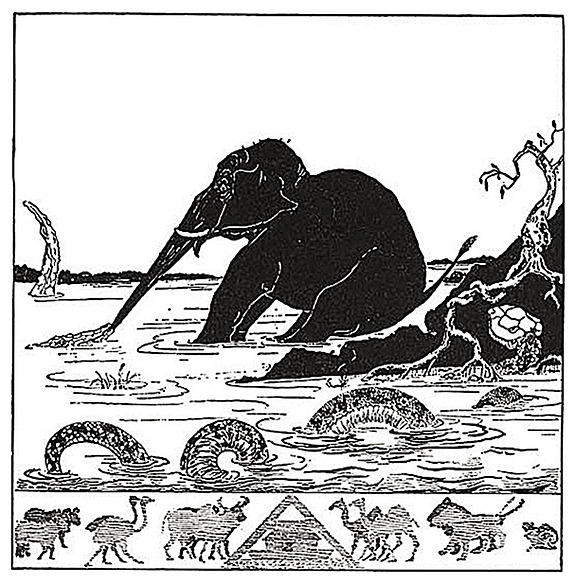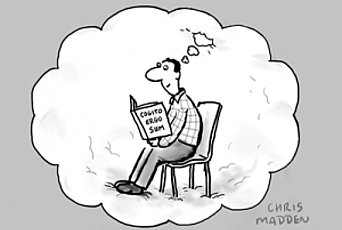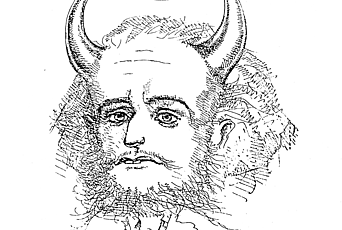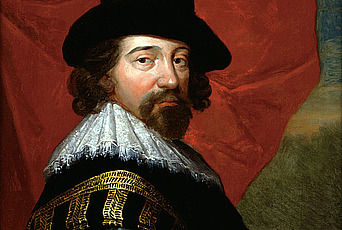How Our Brains Operate

All of us who have watched as a friend or relative has disappeared into the fog of Alzheimer’s arrive at the same truth. Although we recognize people by their visual appearance, what we really are as individual humans is determined by how our brains operate. The brain is certainly the least understood organ in the human body. If you ask a cardiologist how the heart works, she will give an engineering description of a pump based on muscle contraction and valves between chambers. If you ask a neurologist how the brain works, how thinking takes place, well . . . Do you remember Rudyard Kipling’s Just So Stories, full of fantastical evolutionary explanations, such as the one about how the elephant got its trunk? They are remarkably similar to a medical description of how the brain works.
The annual meeting of the Society for Neuroscience attracts over thirty thousand registrants. It is not for lack of effort that we understand so little of how the brain functions. The problem is one of the size, complexity, and individuality of the human brain. Size: the human brain has approximately one hundred billion nerve cells, each connecting to one thousand others. Complexity: there are one hundred different types of nerve cells, each with its own detailed properties. Individuality: all humans are similar, but the operation of each brain is critically dependent on its individual details. Your particular pattern of connections between nerve cells contains your personality, your language skills, your knowledge of family, your college education, and your golf swing.
We will never know the connectivity pattern of any individual human. But even without that, there are general questions essential to our humanness that can be addressed on the basis of the many neurobiological facts now available.
The existence of memory. The sense of time. Thinking. Human language. Consciousness. These properties are all collective, high-level descriptions of events that are implicitly caused by the activity of huge numbers of interacting nerve cells. Tornadoes are a high-level description of the motions of enormous numbers of interacting molecules. We want to understand how mind emerges from brain, just as we understand how tornadoes emerge from molecules. I will say a few words about the easiest and about the deepest items on the list: memory and consciousness.
We have associative memory. If you went to a party last Saturday, the location of the party, whom you spoke with, what the meal was, the conversations you had are all linked together. Let’s say someone asks you, “Have you seen Pat since last summer?” You might reply, “He was at a fabulous party last Saturday, where I heard that . . .” and on. Items in your memory are linked together in a rich web, and reminding you of something immediately connects you with items that are associated. Recall is summoned up by association. By contrast, all digital computer memory is by address. You store information at a location and can retrieve it only by giving the location at which it is stored.
There is a simple mathematical model describing how a particular kind of nerve circuit will behave as an associative memory. The question of whether this model in fact describes how we have associative memories then becomes an experimental question of whether the part of the brain that is responsible for associative memory has the expected circuitry and uses it in the expected fashion. There is increasing evidence in the rat, one of our very distant cousins, that a region of the brain called the hippocampus has the expected properties, and has activity patterns consistent with associative memory. What about in humans, for our brains contain a hippocampus that is very similar to that of a rat? For humans the situation is more complex, and the current popular hypotheses are more a “Just So” story than a viable theoretical description.
Finally, on to consciousness. Let me ask each of you, “Are you conscious of your shoes pressing on your feet?” The pressure-sensing nerve cells in your feet were sending signals to your brain both before and after you heard that question, but somehow hearing that question switched your state of conscious awareness of your feet. There are no useful scientific descriptions of how this takes place, or of the neural activity that this state of awareness of my feet implies. The problem is that consciousness is an internal personal feeling. I can describe my conscious awareness of the world to you by using language, but you have no scientific way of verifying that description.
I have asked many brilliant scientists about consciousness and have heard an amazing diversity of answers. The artificial intelligence pioneer Marvin Minsky remarked that the really difficult things that a brain does are all done nonconsciously—tasks like perceiving the visual world as made up of separate objects. Minsky further pointed out experiments in which a decision that you declare you have made consciously had in fact been made and begun to be acted on before you were consciously aware of that decision. In Minsky’s view, consciousness may be a feeble attempt of the human brain (a special kind of computer) to describe its own actions in terms of the behavior of an agent called “me.”
I asked Francis Crick for his view of consciousness. He replied with a long monologue about the gene, beginning with Gregor Mendel and his discovery of the discrete nature of inheritance. It took a couple decades for Mendel’s discovery to become understood as the central issue of biology. Slowly, the concept of a gene was developed. That concept began with no plausible basis in the physical or chemical world. It was more than a century between Mendel and the ultimate understanding of the basis of inheritance through knowing the genetic meaning of a DNA molecule. Through this century, biologists wrestled with a concept of a gene because they understood that inheritance stood at the heart of biology. Crick concluded this lecture (to me) with the simple statement “To me, consciousness is like that—ill-formulated, but lying at the center of what it is to be human.”
I myself would not go quite that far. But I do share with Crick the belief that we will not understand the essence of what it is to be human until we have a viable theoretical understanding of how the human brain functions. It may take another century to produce. Present experimental facts are inevitably inadequate. But, like the genetic pioneers, we must try, for how the human brain works is the most fundamental scientific question that our humanity poses to us.


